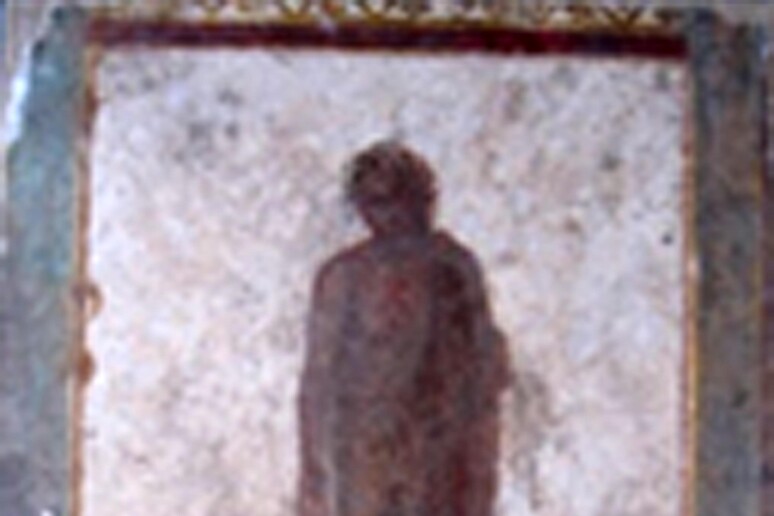Carabinieri police have recovered
three frescoes stolen from the ancient archeological area of
Pompei in the 1950s and until now part of the private collection
of a deceased United States businessman, sources said on
Tuesday.
The frescoes, dating from the first century BC and
featuring two women and a man, were due to be put up for
auction.
One of the frescoes shows a young woman with an amorino or
cupid on her shoulder.
Another shows a woman wearing a long red cloak and carrying
a wine goblet called 'oinochoe'.
The third shows a man in an elegant pose.
They belonged to a group of six frescoes that were
plundered from the Pompeii archaeological superintendent's
office in 1957.
Italy's crack art cops, the Carabinieri unit for the
protection of cultural heritage, have already recovered the
others in Europe and the United States.
One was a peacock found in Switzerland, another a portrait
of Dionysus found in the UK and the other a ministering
priestess recovered in the US.
The three newly recovered frescoes were part of a haul of
25 masterpieces smuggled out of Italy and illicitly sold over
the years.
Other major works recovered by the Carabinieri unit and
shown to journalists Tuesday include a second-century AD white
marble 'sleeping beauty' and a pinnacle from a tomb from the
ancient Greek city of Paestum near Salerno, dating to the third
or fourth century BC and showing a Macedonian-style flute
player.
The Carabinieri recovered the works after a probe
involving the US Homeland Security Investigations and
Immigration and Customs Enforcement (ICE) agencies.
The treasures, valued at over 30 million euros, will now
be returned, one by one, to their places of origin or museums as
close to them as possible, Italian Culture Minister Dario
Franceschini said at the presentation of the finds.
The haul "raises once again the alarm on protecting
humanity's heritage," the minister said.
This heritage, he said, was "increasingly under attack not
only by art traffickers but also by the systematic destruction
wreaked by ISIS.
"It is ever more urgent for the international community to
mobilise in organised prevention. Two countries highly conscious
of these issues, like Italy and the US, must propel the fight
against the theft and illicit sale of works, because this will
be a problem for decades to come", Franceschini said.
US Ambassador to Italy John R. Philips said: "What has
been returned today is just a fraction of the works currently
illegally circulating on the market.
"Every artefact, each piece of history that is restored,
is a step forward".
Some of the works presented Tuesday were "old
acquaintances of the Carabinieri art protection unit, said its
head, General Mariano Mossa.
These included an Etruscan 'kalpis' painted with dolphins
by the famed Mikali in 510-500 BC, illegally exported by
notorious trafficker Giacomo Medici and voluntarily given back
by the Toledo Museum in Ohio.
The sleeping beauty, meanwhile, passed through the noted
marble company of Cesare Becchina onto a Swiss dealer to a
Japanese collector who put it on sale in a private New York
gallery for $4.5 million.
As for the pinnacle showing the flute player, it was
heading via Liechtenstein and Switzerland for a US collector who
has already had a famed work, the Morgantina gold phial,
confiscated.
Other works recovered and on show Tuesday include two
small male heads - a Nubian from the 5th-6th century BC and a
terracotta one from the third century BC - both found at the
Griffin Gallery in Boca Raton in Florida; a 5th-century BC Attic
krater attributed to Methyse recovered in Minnesota; and a
17th-century Venetian cannon intercepted in Boston.
No one has been arrested, General Mosa explained, either
because the works were handed over voluntarily or because the
crimes have timed out under the statute of limitations.
But Franceschini pointed out: "with the justice ministry,
we are working on a bill to redefine the entire subject of
cultural heritage, tomb raiding, smuggling and related crimes".
ALL RIGHTS RESERVED © Copyright ANSA











